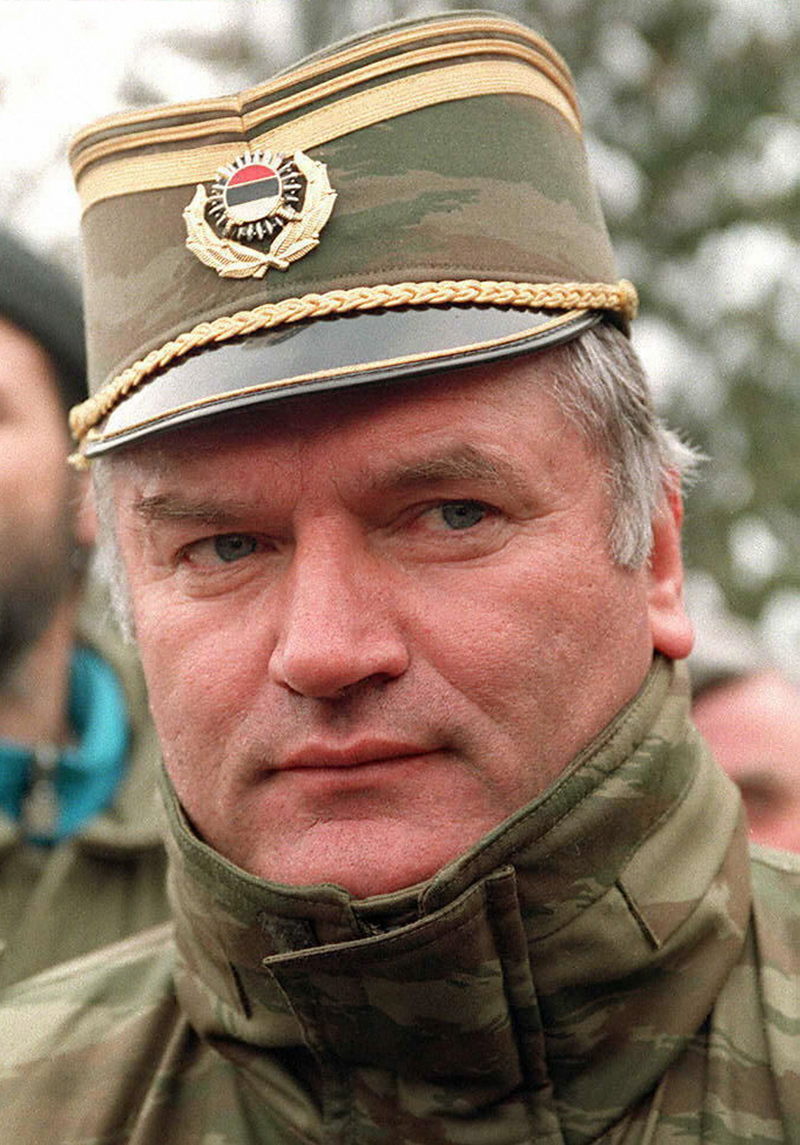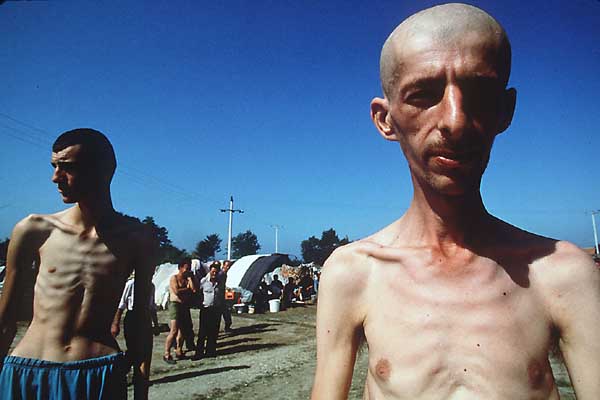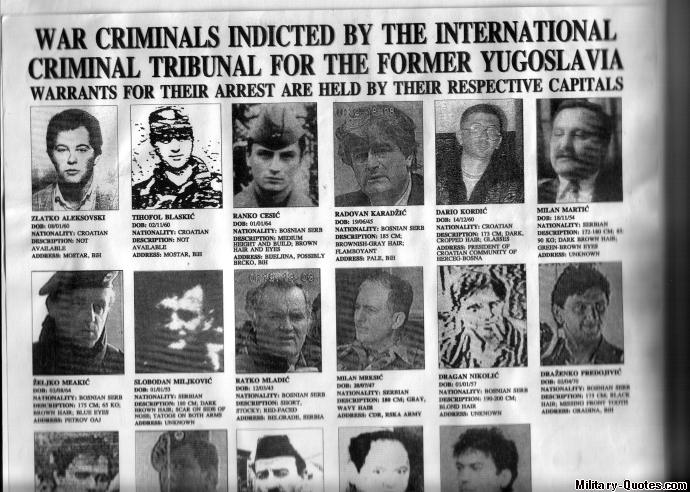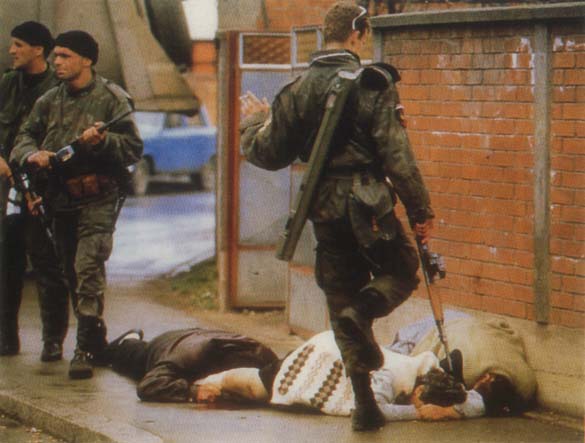
NEW YORK TIMES: Ratko Mladic, the former Bosnian Serb general accused of war crimes including masterminding the massacre of some 8,000 Muslim men and boys at Srebrenica in 1995, has been captured in Serbia after more than 15 years as one of the world’s most wanted fugitives. Serbian news reports said that Mr. Mladic had been living under the name of Milorad Komadic and that he was captured in the small farming town of Lazarevo in Vojvodina, the Serbian province north of Belgrade, after authorities received a tip that the man known as Komadic resembled Mr. Mladic and had identification documents with that name. Witnesses said he was not wearing a beard or any disguise, and had aged considerably, appearing older and thinner than the stout self-assured professional soldier who had last been seen in public in 2006. While close associates of Mr. Mladic had long said that Mr. Mladic would sooner kill himself than face capture, the Serb media reported that he had two pistols with him when he was arrested and did not attempt to use them. Police said he did not resist arrest, and was very cooperative. MORE
RELATED: Few top fugitives, including Osama bin Laden, have been on the verge of apprehension longer than Serbian Gen. Ratko Mladic, the brutal, operational face of genocide in the Balkans in the 1990s. For years, international prosecutors and leaders have left Belgrade with assurances that Mr. Mladic is about to be captured. Now, 15 years after his indictment for war crimes, a Serbian judge ruled that Mladic was medically fit to be extradited to face trial at the Hague, despite his lawyer’s objections and likely appeal. Mladic’s arrest by Serb authorities makes him the last of a Serb triumvirate to be captured for trial that includes Yugoslav President Slobodan Milosevic and Bosnian Serb leader Radovan Karadzic. Together the three men helped ignite orgies of ethnic hate and killing in the Balkans. Coming immediately after the heady fall of the Berlin Wall and end of the Soviet sphere of influence in 1989, sometimes called “the end of history,” Mladic played a direct role in opening a darker side of human history. For a Europe that swore “never again” after the gas chambers of Auschwitz and the official demonization of Jews, the chaos and ethnic cleansing Mladic helped unleash in the Balkans was an enormous test for Western values and resolve. That test often proved too much, analysts say. MORE
RELATED: In the Bosnian silver-mining town of Srebrenica in July 1995, one of the most notorious modern  acts of gendercide took place. While the international community and U.N. peacekeepers looked on, Serb forces separated civilian men from women and killed thousands of men en masse, or hunted them down in the forests. In June 1995, Bosnian Serb forces, pushing for a resolution to the ethnic “anomaly” of the Muslim enclaves, closed their noose around Srebrenica and the other “safe areas.” In Srebrenica, mass panic took hold of the civilian population. Women and children gathered at the U.N. base of Potocari, together with about 1,700 men,while most of the “battle-age” males — mostly unarmed non-combatants — took to the hills in a desperate attempt to flee to Muslim-held territory to the west. At Potocari, Dutch troops meekly allowed the Serbs access to the camps and the refugees they held. Then, the following day — July 11 — some 1700 men, disproportionately the elderly and infirm, were separated from women and children. The peacekeepers “stood inches away from the Serb soldiers who were separating the Muslim men, one by one, from their families” (Sudetic, Blood and Vengeance, p. 306). At Serb command, the Dutch drew up a registry of 242 Bosnian men remaining in the camp, again mostly elderly and infirm. Then they handed the men over to the Serbs. Not one of the 242 men is known to have survived. The children and women were bused, with isolated exceptions, to safety in Tuzla. Men, almost without exception, were carted away to their deaths. MORE
acts of gendercide took place. While the international community and U.N. peacekeepers looked on, Serb forces separated civilian men from women and killed thousands of men en masse, or hunted them down in the forests. In June 1995, Bosnian Serb forces, pushing for a resolution to the ethnic “anomaly” of the Muslim enclaves, closed their noose around Srebrenica and the other “safe areas.” In Srebrenica, mass panic took hold of the civilian population. Women and children gathered at the U.N. base of Potocari, together with about 1,700 men,while most of the “battle-age” males — mostly unarmed non-combatants — took to the hills in a desperate attempt to flee to Muslim-held territory to the west. At Potocari, Dutch troops meekly allowed the Serbs access to the camps and the refugees they held. Then, the following day — July 11 — some 1700 men, disproportionately the elderly and infirm, were separated from women and children. The peacekeepers “stood inches away from the Serb soldiers who were separating the Muslim men, one by one, from their families” (Sudetic, Blood and Vengeance, p. 306). At Serb command, the Dutch drew up a registry of 242 Bosnian men remaining in the camp, again mostly elderly and infirm. Then they handed the men over to the Serbs. Not one of the 242 men is known to have survived. The children and women were bused, with isolated exceptions, to safety in Tuzla. Men, almost without exception, were carted away to their deaths. MORE
RELATED: Instead of a blindfold, the Serb soldiers bound Enisa’s eyes with their socks. The stench made her throw up, so they hit her until she learned that ‘Serb socks don’t smell’. Seven ‘heroes of the nation’ raped her and beat her for days. At first she resisted, so they brought her to her senses by knocking her teeth out with a rifle-butt and breaking her jaw. When she lost consciousness they would ‘give her a bath’, i.e. douse her in cold water. Terrified that she would be driven mad, she suddenly liked the idea and saw madness as a way out. She began singing Serb songs louder and louder, then dancing with the chetnik who had presumably  butchered her husband. The soldiers were dumbfounded. They threatened her, held a knife to her throat, but she only sang louder. Believing she had gone off her head entirely, the soldiers paid less attention to her and she managed to escape, by hiding in a potato sack. When the journalist Seada Vranic spoke with Enisa a few months later, in July 1992, she saw before her a hunched, grey-haired old woman with a contorted face. That was just one month before Enisa’s twenty-eighth birthday. MORE
butchered her husband. The soldiers were dumbfounded. They threatened her, held a knife to her throat, but she only sang louder. Believing she had gone off her head entirely, the soldiers paid less attention to her and she managed to escape, by hiding in a potato sack. When the journalist Seada Vranic spoke with Enisa a few months later, in July 1992, she saw before her a hunched, grey-haired old woman with a contorted face. That was just one month before Enisa’s twenty-eighth birthday. MORE
RELATED: Karadzic and Mladic were tracked intensely from the time of the Dayton Accords in 1995 onward, but inside the CIA’s Balkan Task Force, there was always uncertainty about whether the U.S. wanted to grab either of them, fearing the implications. […] Mladic and Karadzic knew they were being tracked. At one point in 1996, Mladic ordered his men to write the words, “F*** YOU” in English, in the snow near the town of Brcko, so it could be seen by spy satellites. The image was shown to Clinton in the White House and he got a good laugh out of it, said one official who was in the room. […] The bottom line, some officials believed, was that the U.S. was not interested in grabbing Mladic or Karadzic. The U.S. knew doing so would complicate the Dayton Accords and the Balkan situation in general and could hurt relations with Russia, which protected the Serbs. “I never heard from the principals that we have to find them,” said one official involved in tracking them. “There was no priority getting the top guys. The priority was to grab the lower-level guys to satisfy public concerns about war crimes.” The CIA, however, kept track “in case the policy changed, and in the Clinton administration, foreign policy, especially Bosnia, was subject to the polls” The CIA was very frustrated by the White House’s lack of interest in grabbing war criminals, knowing the level of war crimes alleged to have been committed. “I read the interviews with rape victims and it was one of the worst things imaginable,” said one CIA official. MORE

RELATED: War In Bosnia Timeline
